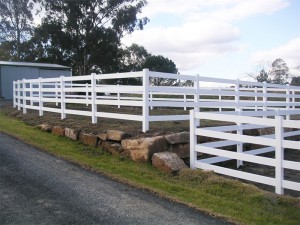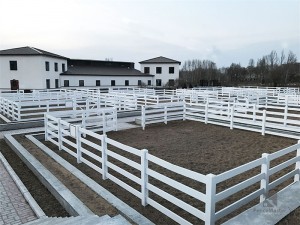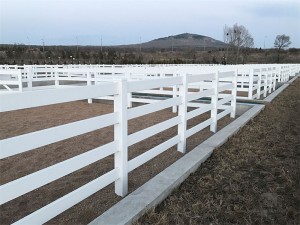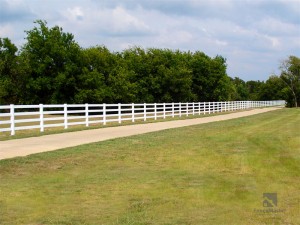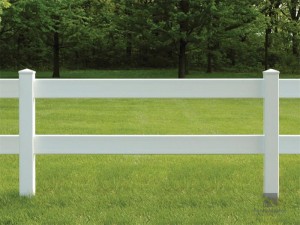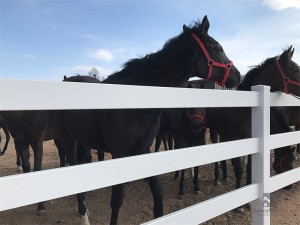4 Rail PVC Vinyl Post and Rail Fence FM-305 For Paddock, Horses, Farm and Ranch
Drawing
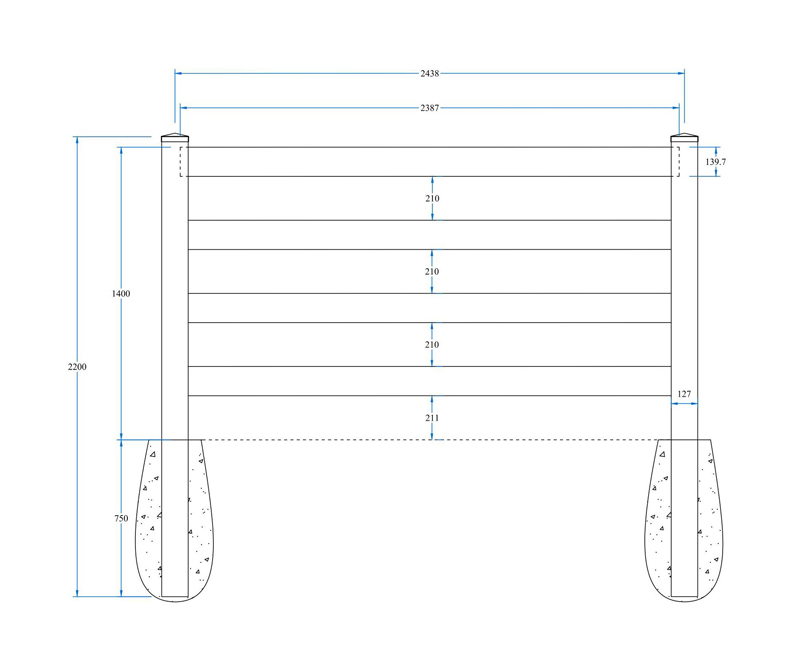
1 Set Fence Includes:
Note: All Units in mm. 25.4mm = 1"
| Material | Piece | Section | Length | Thickness |
| Post | 1 | 127 x 127 | 2200 | 3.8 |
| Rail | 4 | 38.1 x 139.7 | 2387 | 2.0 |
| Post Cap | 1 | External Flat Cap | / | / |
Product Parameter
| Product No. | FM-305 | Post to Post | 2438 mm |
| Fence Type | Horse Fence | Net Weight | 17.83 Kg/Set |
| Material | PVC | Volume | 0.086 m³/Set |
| Above Ground | 1400 mm | Loading Qty | 790 Sets /40' Container |
| Under Ground | 750 mm |
Profiles
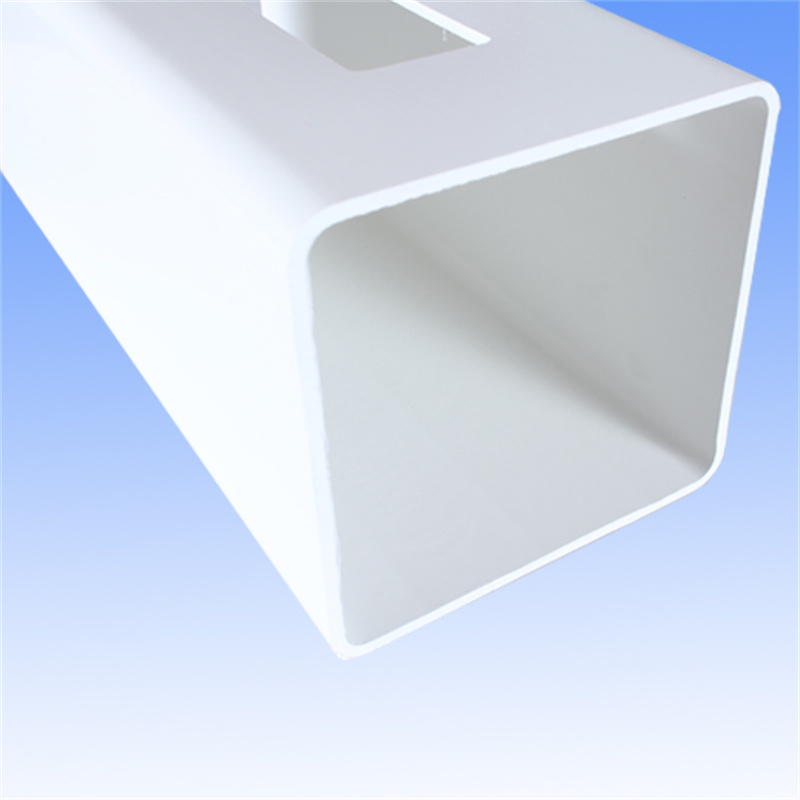
127mm x 127mm
5"x5"x 0.15" Post
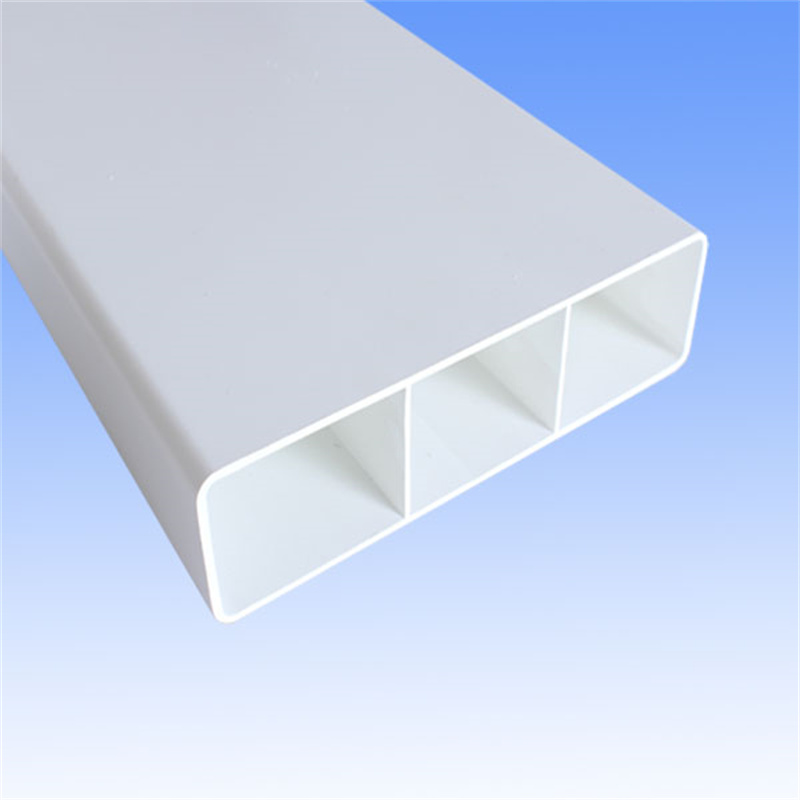
38.1mm x 139.7mm
1-1/2"x5-1/2" Rib Rail
FenceMaster also provides 5”x5” with 0.256” thick post and 2”x6” rail for customers to choose, to build a stronger paddock. Please contact our sales staff for more details.
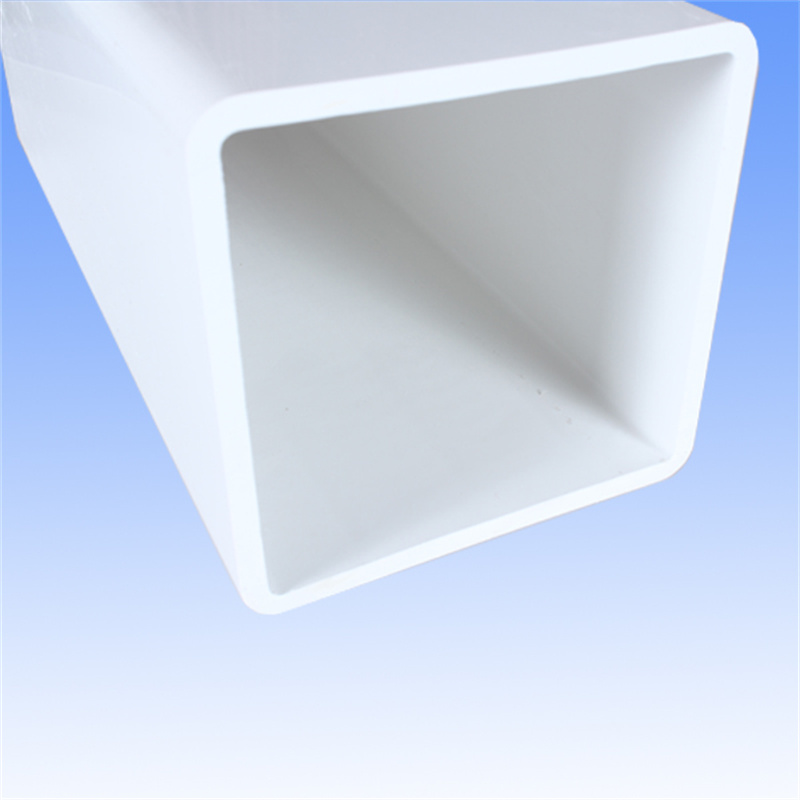
127mm x 127mm
5"x5"x .256" Post
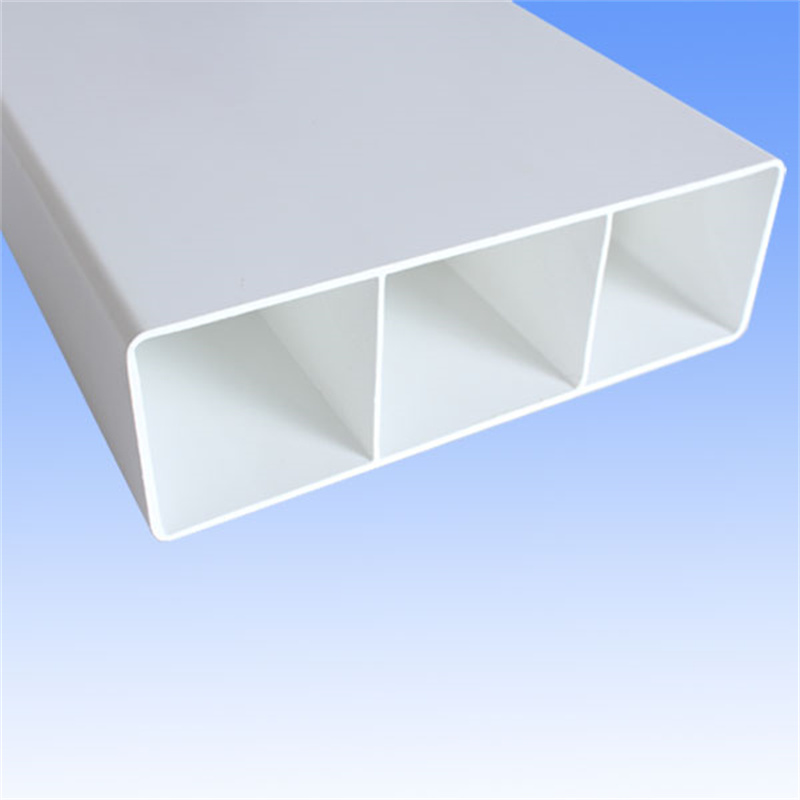
50.8mm x 152.4mm
2"x6" Rib Rail
Caps
The external pyramid post cap is the most popular choose, especially for horse and farm fencing. However, if you find that your horse will bite the external post cap, then you need to choose the internal post cap, which prevents the post cap from being bitten and damaged by the horses. The new England cap and Gothic cap are optional and are mostly used for residential or other properties.
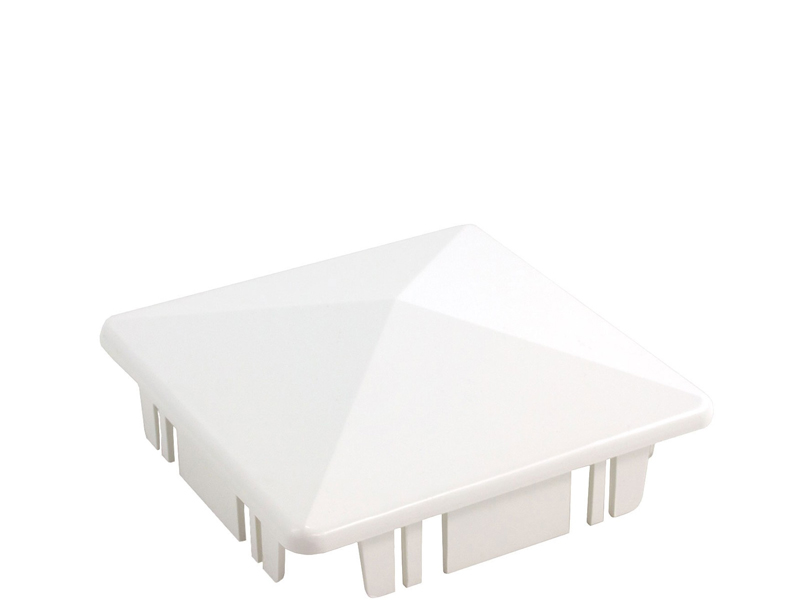
Internal Cap
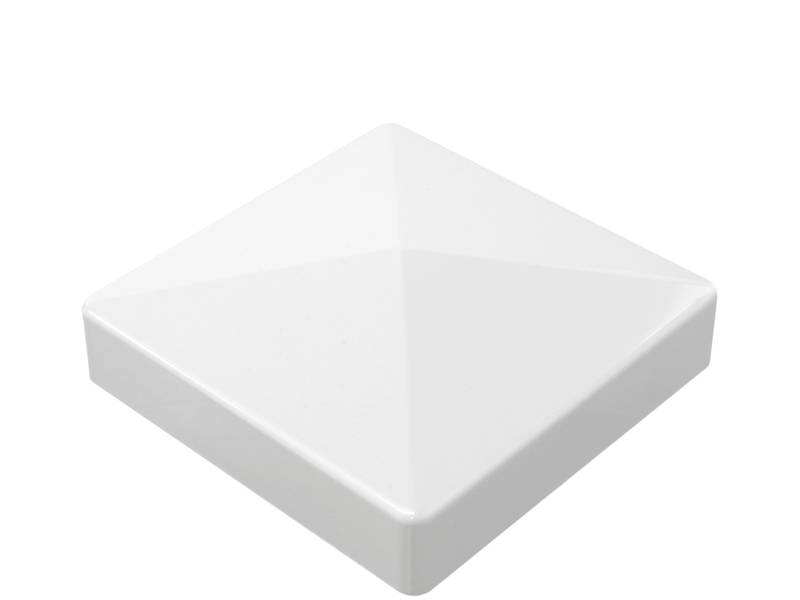
External Cap
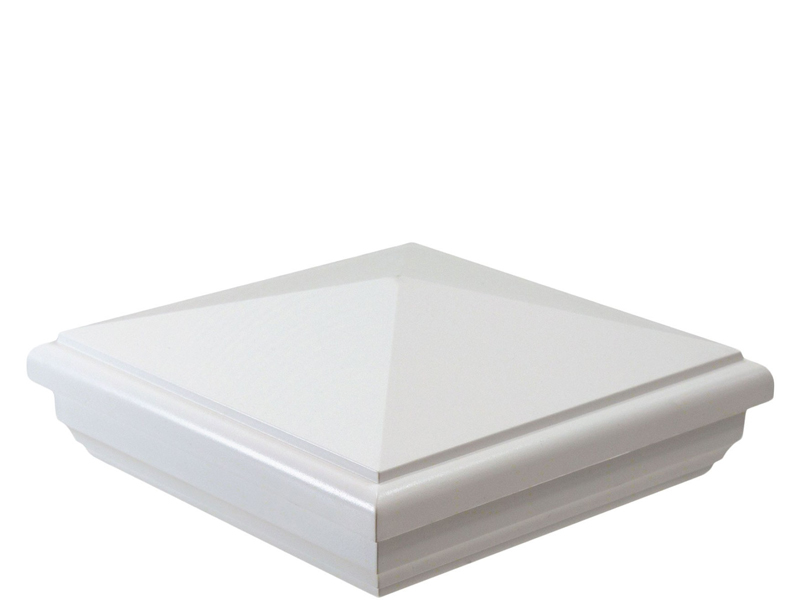
New England Cap
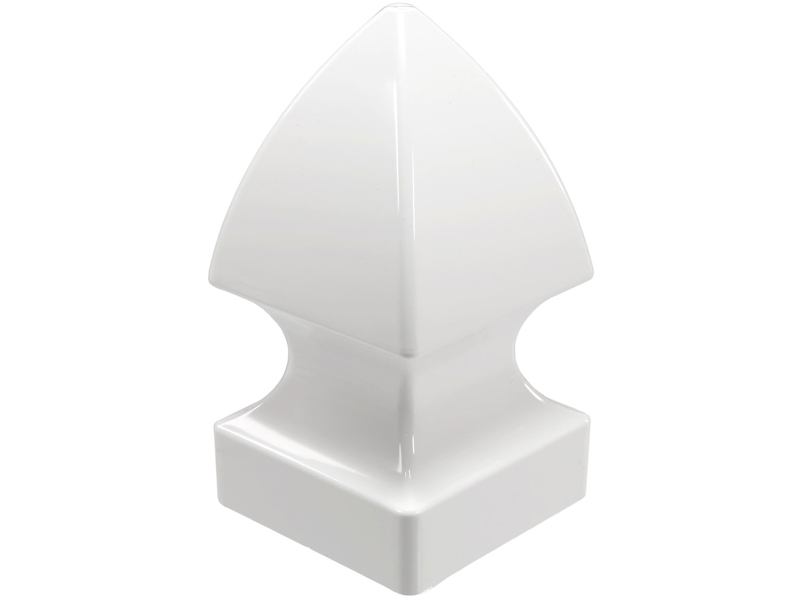
Gothic Cap
Stiffeners
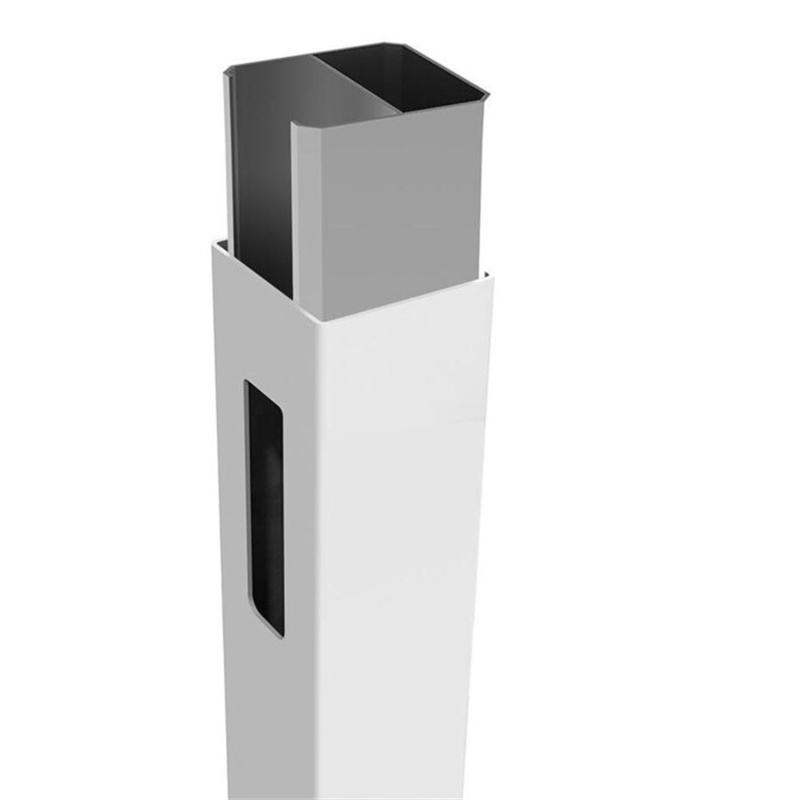
Aluminum Post Stiffener is used to strengthen the fixing screws when following the fencing gates. If the stiffener is filled with concrete, the gates will become more durable, which is also highly recommended. If your paddock may have large machinery in and out, then you need to customize a set of wider double gates. You can consult our sales staff for a proper width.
Paddock

8m x 8m 4 Rail With Double Gates

10m x 10m 4 Rail With Double Gates
Building a quality paddock requires careful planning and attention to detail. Here are some steps to follow:
Determine the size of the paddock: The size of the paddock will depend on the number of horses that will be using it. A general rule of thumb is to allow at least one acre of grazing space per horse.
Choose the location: The location of the paddock should be away from busy roads and other potential hazards. It should also have good drainage to prevent standing water.
Install fencing: Fencing is an important aspect of building a quality paddock. Choose a durable material, such as vinyl, and make sure the fence is tall enough to prevent horses from jumping over it. The fence should also be regularly checked and maintained to ensure it is secure.
Add shelter: A shelter, such as a run-in shed, should be provided in the paddock for horses to seek refuge from the elements. The shelter should be large enough to accommodate all the horses using the paddock.
Install water and feed systems: Horses need access to clean water at all times, so install a water trough or automatic waterer in the paddock. A hay feeder can also be added to provide horses with access to hay.
Manage the grazing: Overgrazing can quickly destroy a paddock, so it's important to manage grazing carefully. Consider using rotational grazing or limiting the amount of time horses spend in the paddock to prevent overgrazing.
Maintain the paddock: Regular maintenance is necessary to keep the paddock in good condition. This includes mowing, fertilizing, and aerating the soil, as well as regularly removing manure and other debris.
By following these steps, you can build a quality paddock that will provide a safe and comfortable environment for your horses.

